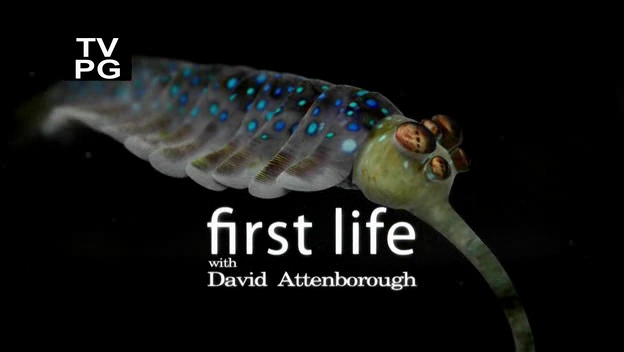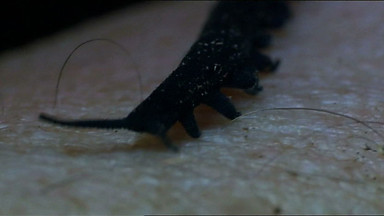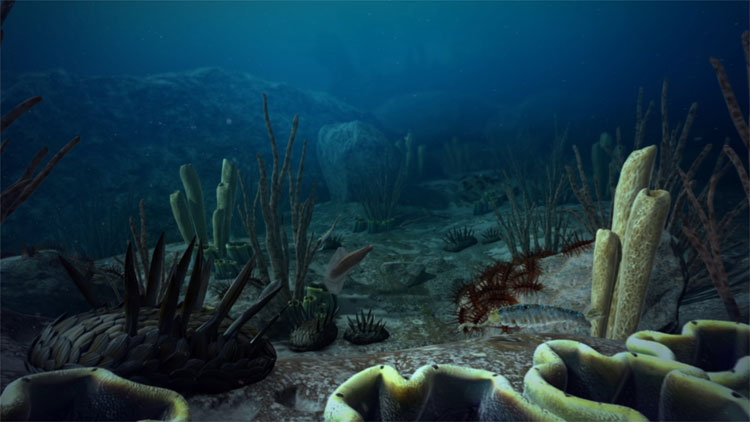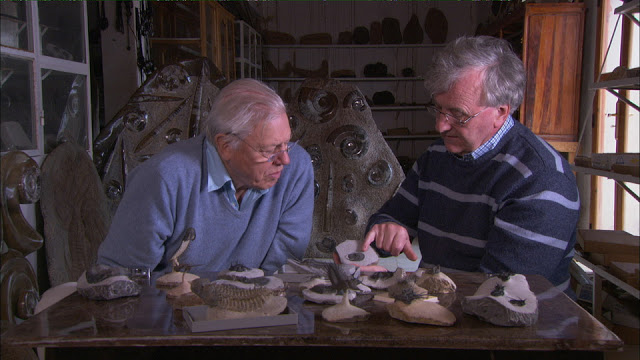The only thing more swooneriffic than David Attenborough narrating a nature documentary is one where he’s narrating a nature documentary about invertebrates. And the only thing even more thrilling than that is when he’s talking about Extremely Obscure Invertebrates, such as those which were last seen over 400 million years ago.

Opabinia! With blue spots and red eyes because why the hell not!
First Life was produced two years ago, but managed to sneak under my Sir David Radar until last night. It’s a small 2-segment documentary that nonetheless manages to follow the unstoppable Attenborough as he visits tropical forests in Queensland, windswept Scottish shores, and finally the fabled Burgess Shale hidden among the lofty mountains of the Canadian Rockies. All of this to tell the story of how early animal life began to diversify on our planet.
Along the way we visit some of our planet’s invertebrates who are living links to the deep time of Earth’s past. One of the wonderful segments involves the onychophoran, an eyeless multilegged predator also known as the velvet worm. I could watch it dumpling about on its clawed legs all day.

I admit it. I’m jealous that this lucky bastard got to walk on Attenborough’s arm.
First Life swings through the Ediacarian to bring us through the Cambrian, and it’s here where the CGI really takes hold. The digital care taken to animate such paleontological celebrities such as Opabinia and Anomalocaris is a joy to watch, especially for a fanboy like me who has read Gould’s Wonderful Life at least 3 times, back in the day. Even bizarre little Hallucigenia is brought to life, and this time in a more plausible position!

Extreme Cambrian CGI Explosion
To explain how absolutely badass Anomalocaris must have been in the Cambrian reefs, Attenborough pisses the hell out of one of the toughest arthropods alive today, a mantis shrimp. These strikingly sculpted stomatopods can see better and move faster than we can. They are therefore handled with extreme care lest they slice us to ribbons, smash out our windows, and redecorate our rooms with lurid colors that appeal to their enhanced eyesight.

Oh David, those gloves won’t protect you at all.
One of the satisfying things about First Life is the array of scientists who get to share some camera time, and talk about the obscure organisms to which they’ve dedicated their lives. How often does a specialist in bacterial extremophiles get to be on the BBC? And when it came time to talk about trilobites, it was great to see Richard Fortey dispense oodles of paleo-factoids right out of his book Trilobites: Eyewitness to Evolution, as the camera spins around an endless supply of masterfully prepared fossil specimens that are way out of your price range.

“Tonight on Paleo-Antiques Roadshow: We sort the fakes from the Phacops!”
Of course, the DVD that’s for sale on Amazon or whatever is Region 2 which means unavailable in the US, because reasons of stupid. So until you can get your palps on a copy of First Life, you’ll have to hop on the internets, and get scouring. Here’s a couple of links that hopefully won’t get the axe anytime soon.
https://www.youtube.com/watch?v=3enM7iGfIsc
https://www.youtube.com/watch?v=xevizYKF8n8
Watch’em before they disappear like Meganeura!![]()
